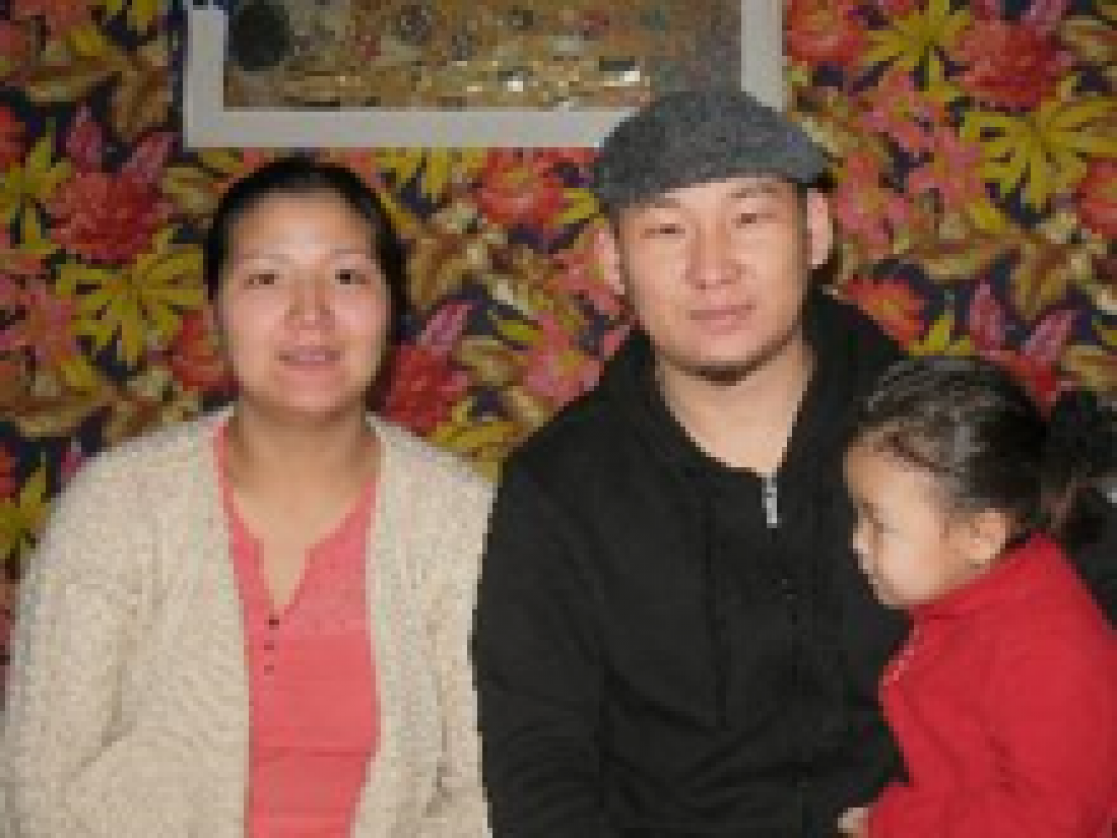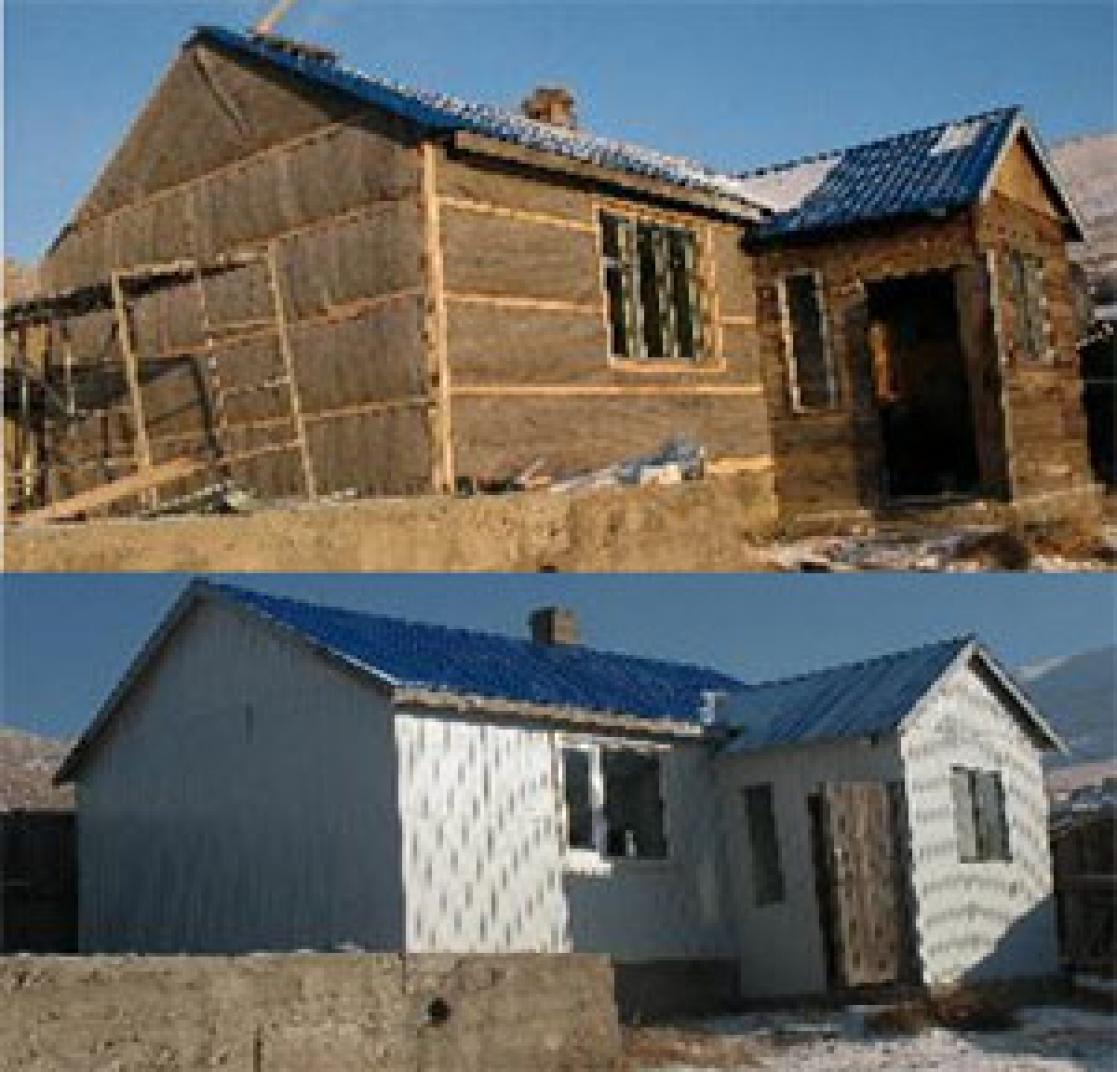Turning Sheep Wool into Environmentally Friendly Building Material - Integrated Approach for Supply Chain Development
Total Cost (EUR): 891 412.00
EU contracted amount (EUR): 713 129.00
Duration: January 2013 - May 2016
Implementing organisation: CLOVEK V TISNI OPS
Benefitting zone: Asia
STORY : Turning sheep's wool into environmentally friendly building material: an integrated approach for supply chain development
An action implemented by People in Need, Czech NGO

"We live in a small basic house (6x4m) with a coal-fired stove for heating and cooking, and burn 6 tons of raw fossil fuel during winter, from October to April. By proper application of sheep's wool-based thermal insulation, the heat loss through the building envelope reduced by 4 times, and coal use by 60%. In this way, we help to reduce air pollution and feel much happier."
Tuvshinbayar, Sukhbaatar District, Ulaanbaatar, Mongolia
CONTEXT
Mongolia had some 45.1 million livestock including 20 million sheep at the time the project was launched in 2013. The country used to see as much as 51% of its raw sheep's wool flowing into China without a single tugrik value added to it. Revival of the domestic agro-processing industry, specifically the primary processing sector, and the diversification of final products from locally available raw materials, were the reason to ban the exports of unprocessed agricultural raw materials.
OBJECTIVES
- The overall objective of the project is to promote sustainable production and sustainable consumption patterns and behaviour within the construction industry in Mongolia by mobilising the private sector - pastoralists, producer SMEs and construction sector SMEs - along with relevant public sector authorities and to stimulate the final consumer demand for local, sustainable, energy-efficient products and practices.
- The specific objective is to develop a sustainable supply chain of sheep's wool building insulation (SWBI) as a green, environmentally-friendly innovative product improving resource efficiency, contributing to poverty reduction, economic development and reducing air pollution and greenhouse gas emissions.
RESULTS
- The project conducted an interdisciplinary market survey on sheep's wool building insulation in the cities of Darkhan, Erdenet and Ulaanbaatar.
- The national standard 'MNS 6470:2014 Sheep's wool based insulation product for building - Technical requirements', was approved by the National Council for Standardisation on October 2 2014, which is a condition to regulate sheep's wool insulation products produced and utilised in the country.
- The primary wool processing SMEs collected 83.94 tons of raw wool and supplied wool-based insulation product manufacturers with 41.97 tons of scoured wool.
- The two entities were able to produce a total of 26,870 m2 of wool based insulation products, enough to insulate 89 single family houses in 2014 based on the estimated 300 m2 of SWBI per house.
TESTIMONY
Through the 'Turning Sheep's Wool into Environmentally Friendly Building Material – Integrated Approach for Supply Chain Development' Project funded by EU, Tuvshinbayar’s house was selected and insulated using sheep's wool based thermal insulation.

Tuvshinbayar’s house in Ulaanbaatar, Mongolia's capital city, an old non-insulated dwelling that has a low energy performance, was selected as a demonstration of how the energy performance of a building can be increased by using sheep's wool based thermal insulation for various applications in the building: external walls and roof ceiling.
Tuvshinbayar lives in a small basic house of 6x4m with a coal-fired stove for heating and cooking. He lives with his dad, wife and two kids. He works as a taxi driver and his father works as a part-time parking coordinator to meet the basic needs of their family. They burn 6-8 tons of raw fossil fuel during winter from October to April and spend about 20% of their total household income on purchasing coal.
His house was selected and insulated using sheep's wool-based thermal insulation. By proper application of sheep's wool-based thermal insulation, the heat loss through the building envelope reduced by 4 times, and coal use by 60% with significant contribution to reduction of CO2, according to energy audits. The positive effects of sheep's wool building insulation have been demonstrated by improved energy efficiency (less firing of coals) and reduced heating costs.
Given the fact that Mongolia is heavily reliant on coal for its energy supply, coal is also used as the main heating fuel for building in urban centers. Therefore, fossil fuel combustion is the largest source of CO2 emissions in Mongolia, accounting for about 60% of all emissions, placing the country amongst the most greenhouse gas intensive economies in the world (UNFCC).
“I needed to get up very early in the morning to fire the coal to heat the house. My wife needed to remove the ashes from the stove and add more coal to the fire for 3 times during the day. Now, after insulating my house with sheep's wool–based thermal insulation, she needs to remove the ashes and add coal to the fire only for one time during the day. It is better for her and gives her more time to take care of the kids. Also, the coal-stove produces less smoke. We spend less money on buying coal and wood. Most importantly, my home is warm and comfortable. I am happy to explain to visitors that we used sheep's wool-based thermal insulation made in Mongolia”.
FACTS AND FIGURES
- 83.94 tons of raw wool was collected for the purpose of producing wool-based building insulation.
- A total of 26,870 m2 of wool based building insulation was produced in 2014.
